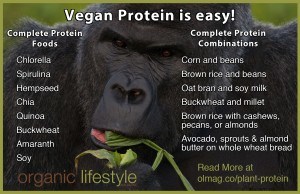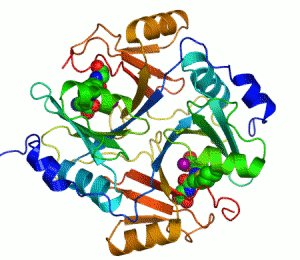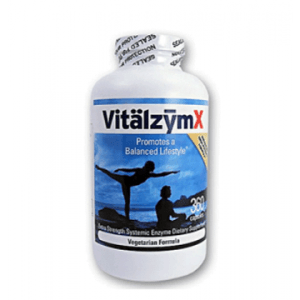Ugly Fruit & Veggies May Pack Extra Nutrients – Get to Know Them!
(Dr. Mercola) A new initiative has been spawned in the U.S., patterned after a similar effort in France focused on marketing unlovely produce such as “the grotesque apple and the ridiculous potato.”
The premise is built on the realization that just because these foods may have an inferior exterior in comparison with the beautiful darlings on display in fruit baskets, it doesn’t mean they’re not edible and nutritious.
Especially in wealthy countries like the U.S., it’s only the most perfect specimens that grace produce shelves — the crop version of the Rockettes, all having the same shape, uniform skin and general appeal.
For the Love of Ugly
One of the biggest flaws in society is that perfection is practically deified. One thing this ideal has led to is the wholesale waste of fresh, misfit produce that has been deemed unmarketable.
The downside of having plenty is that people feel they have room to be discriminating.
Anything “flawed” needs to go away, so it does — into the garbage heap. Unfortunately, the amount of pitched fruits and vegetables has been estimated at around one-third of what is produced — around 133 billion pounds of food per year.
The sad fact is we’re all to blame. Whether we’re consumers who allow good food to deteriorate in little plastic coffins in our refrigerators, or obsessive “safety first” freaks who actually believe they should purge anything past its so-called “sell-by” date, there aren’t many of us who aren’t guilty of this type of squander.
Growers sorting bumper crops of fruits and vegetables for the marketplace regularly toss produce that isn’t necessarily the best looking, or they simply plow it under.
Food is the Largest Material in U.S. Landfills
Fresh foods are perishable, obviously, but rather than finding someone close by who needs it, the easiest course is to cart it to the nearest landfill. In fact, these once viable foods are what take up the most space in landfills. According to one PBS article:
“Now food is the largest material in our landfills. Of all the things that are in our dumps, the biggest portion is food. And when it rots in a landfill, it emits methane, which is a very potent greenhouse gas, 30 or 100 times more potent than carbon dioxide.”1
A cauliflower, for instance, might have yellow patches; it might just be considered too large. Although it’s crispy, tasty — everything a cauliflower is supposed to be — these are routinely rejected. Perfectly fine peaches that aren’t flawless perfection might end up as cattle feed.
There are multiple points at which waste is generated in a growing operation. One of the problems farmers have is that when prices fluctuate between planting and harvest to the degree that taking it to market isn’t even worth it, the easiest course is the landfill. Some produce goes bad in transport or in processing.
A Natural Resources Defense Council report estimated that as much as 30 percent of some farmers’ crops never make it to market. Another problem with this is that those crops were watered needlessly, and most are well aware of the water shortage in the western U.S.
The Land of Misfit Produce Has Been Found to Be Healthier
Some researchers believe fruits and vegetables that are misshapen, bearing nicks or what have you, may actually have higher antioxidant content. One orchard owner in Virginia suggested that stress may even help create super fruit.
She conducted an off-grid test to compare the nutritional value of both marred and unmarred Parma apples from her orchard, and reported that the ones with blemishes were sweeter by 2 percent to 5 percent — a bonus for her since the sweetest apples produce the tastiest cider.
It’s already well known that organic food is healthier. One reason is because of whatsn’t there — it isn’t loaded down with pesticide residues and other toxins. A 2012 study2 revealed that organic produce contains as much as 40 percent more antioxidants than conventionally grown varieties.
Among those antioxidants are innumerable elements such as carotenoids, flavonoids, phenolic acids and many other health-promoting nutrients. Those may or may not be present in spite of weather and pests, but because of them.
This truly may be a case where what doesn’t kill (organic fruits and vegetables) makes them stronger!
Interestingly, organic produce isn’t just safer to eat, it contains more of what we eat food for — to ingest the vitamins and minerals we need to maintain health; to literallymake food our medicine and medicine our food, as Hippocrates advised.
The ugli fruit gets a gold star in this regard. It has thick, yellow-green skin so loose, lumpy and leathery that anyone who didn’t know better might pass it by.
But studies show it contains 11 antioxidant, free-radical-scavenging and iron-reducing compounds and flavonoids, is anti-inflammatory, antiviral, anti-allergic, and significantly reduced smoke-induced carcinogens.
Its compounds may help protect against viral infections, allergies, and fungal conditions, and its peel contains coumarin, which may protect against tumorous cancers.3
Don’t Pitch It — Redirect It
Countless organizations are dedicated to feeding the hungry. Shelters, food banks and soup kitchens are there for this purpose. Some have devised innovative ways to convince restaurant and grocery store owners to funnel rejected produce, which very often is perfectly fine, to such places rather than to the landfill.
One program is the EPA’s Food Recovery Challenge,4 dedicated to reducing the amount of food wasted in the U.S. (possibly inspired by the European Union, which declared 2014 as the Year Against Food Waste5).
In fact, a Harvard-based conference titled, “Reduce & Recover: Save Food For People,”6 “prioritizes actions people can take to reduce and recover wasted food.”
Another project called Imperfect Produce7 was designed to offer not-so-perfect plant-based foods for a drastically discounted price, working with Whole Foods and other retailers.
The company delivers “wonky”-looking fruits and veggies from several Southern California locations to homes and offices. The goal is to expand to other areas across the U.S. Imperfect Produce was designed after a French endeavor called Inglorious produce, its goal to market “the grotesque apple, and the ridiculous potato.”
Unfortunately, as one farmer related, getting foods destined for the rubbish heap into the hands of someone who’ll eat it is not free:
“There’s got to be an economic incentive to move more of this into an avenue that food banks could take advantage of. It’s a lot easier and cheaper just to basically throw it away.”8
Farmers in seven states get tax credits for donating produce, but food banks have been lobbying for larger deductions.
It’s What’s on the Inside That Counts
Restaurants and grocery stores on the other end of the operation perpetrate a staggering amount of waste themselves, but a few, including Safeway and Giant Eagle, have jumped on board to find a home for cosmetically challenged, plant-based foods.
An example of how Raley’s western-based grocery chain tackled the dilemma of wasted food is fairly straightforward: They opted to start selling produce that doesn’t necessarily appear flawless, and at a 25 percent or greater discount.
The “Real Good” program — the first of its kind in the U.S. — focuses on fruits and vegetables described as “scarred (or) aesthetically challenged,” but with imperfections so insignificant consumers often can’t tell why it was ever considered a reject.
“The grocer said qualifying produce is uniquely shaped, sized or colored, but otherwise the same in flavor and quality as standard produce offerings. Among the “Real Good” offerings are plums, peppers and pears that will be offered at prices 25 percent to 30 percent lower than flawlessly shaped, uniformly colored produce.”9
Heirloom Fruits and Vegetables — Our Last, Best Hope
Many people who grow their “real food” do so for more reasons than the enjoyment of getting dirt under their fingernails. In many cases it’s because they know using seeds that are the “real thing” — not hybrids crossed from two or more varieties, but open-pollinated and sometimes saved from actual produce — may have advantages many have never considered.
Why would anybody go to the trouble of soaking, scraping, drying and carefully preserving the seeds from their garden produce, or tracking down heirloom seed varieties to grow in their gardens, when they can purchase all the seeds they want down the street for just a few dollars? Turns out there are many motivations:
- Heirloom varieties aren’t laced with pesticides and other harmful chemicals, such as GMOs.
- Heirloom foods taste better. Many people today have no idea what some foods are supposed to even taste like, because beauty has replaced flavor in the marketplace. But the originally created model of foods like delicious, meaty tomatoes and nutty, buttery squash exist only from seeds saved, protected, and sometimes handed down through several generations.
- Heirloom vegetables and fruits often contain superior nutrition. While the bottom line is profit, and profit is maintained by offering more and more of the prettiest peaches, carrots and lettuce, growers have gotten into the habit of planting for a continual bumper crop of higher yields. But it turns out that the practice has backfired; the highest nutrients are often found to be significantly higher in those older varieties.10
- Heirloom seeds are open-pollinated, meaning you can save and plant the seeds from year to year. They produce plants with offerings that are true to type, which is more often than not, not the case with hybrids.
- Heirlooms produce less-uniform crops, so they ripen at different times. While large farming operations like everything to reach maturity at the same time so they can pick everything all at once, home gardeners get the advantage of harvesting produce as they need it.
Heirloom seeds are also less expensive — even free. It just stands to reason that if you save your seeds from year to year, you’ll pay literally nothing, other than your time. And the result will be just as mouth-wateringly delicious as last year.
Scientific ‘Improvement’ Not What the Doctor Ordered
Mother Earth News reported:
“A lot of the breeding programs for modern hybrids have sacrificed taste and nutrition,” says George DeVault, executive director of Seed Savers Exchange, the leading nonprofit organization dedicated to saving and sharing heirloom and other rare seeds. “The standard Florida tomato is a good example. Instead of old-time juicy tangy tomatoes, it tastes like cardboard.
It was bred to be picked green and gas-ripened because that’s what was needed for commercial growing and shipping.”11
A perfect example of what happens when something like an apple is scientifically targeted for genetic perfection is the Red Delicious apple. These delectable apples with unique coloring and crisp, juicy flavor were America’s favorite for nearly 75 years — until selective breeding rendered them not only unpopular but also virtually inedible.
What happened? Well, when a grower noticed a single branch on a Red Delicious tree produced red apples sooner than the rest, an all-out campaign began among orchard owners to “out-breed” their competitors. The hope was that grafting branches from the source tree might produce ever-more-beautiful apples. What they got instead was a mealy, tasteless mush no one wanted to eat, even though the outside looked gorgeous.
As the old saying goes, beauty is only skin deep. Other fruits and vegetables, unfortunately, have been similarly “messed with,” especially in this age of growers and grocers counting heavily on produce appearing as attractive when it’s unloaded as when it’s picked.
Saving Food in Order to Save People Starts with Caring
It’s not just to keep available food from being wasted. The ultimate goal should be to feed people who are hungry. According to Paul Ash from the California Association of Food Banks:
“Fifty million Americans don’t know where their next meal is coming from. We, meanwhile, are wasting this — all this food. If we cut our food waste even by a third, there would be enough food for all those people who don’t know where their next meal is coming from to be fully fed.”12
The question begs to be asked: With all the hunger in the world — much of it in our own communities–aren’t there more ways this obscene waste can be redirected to do some good?


